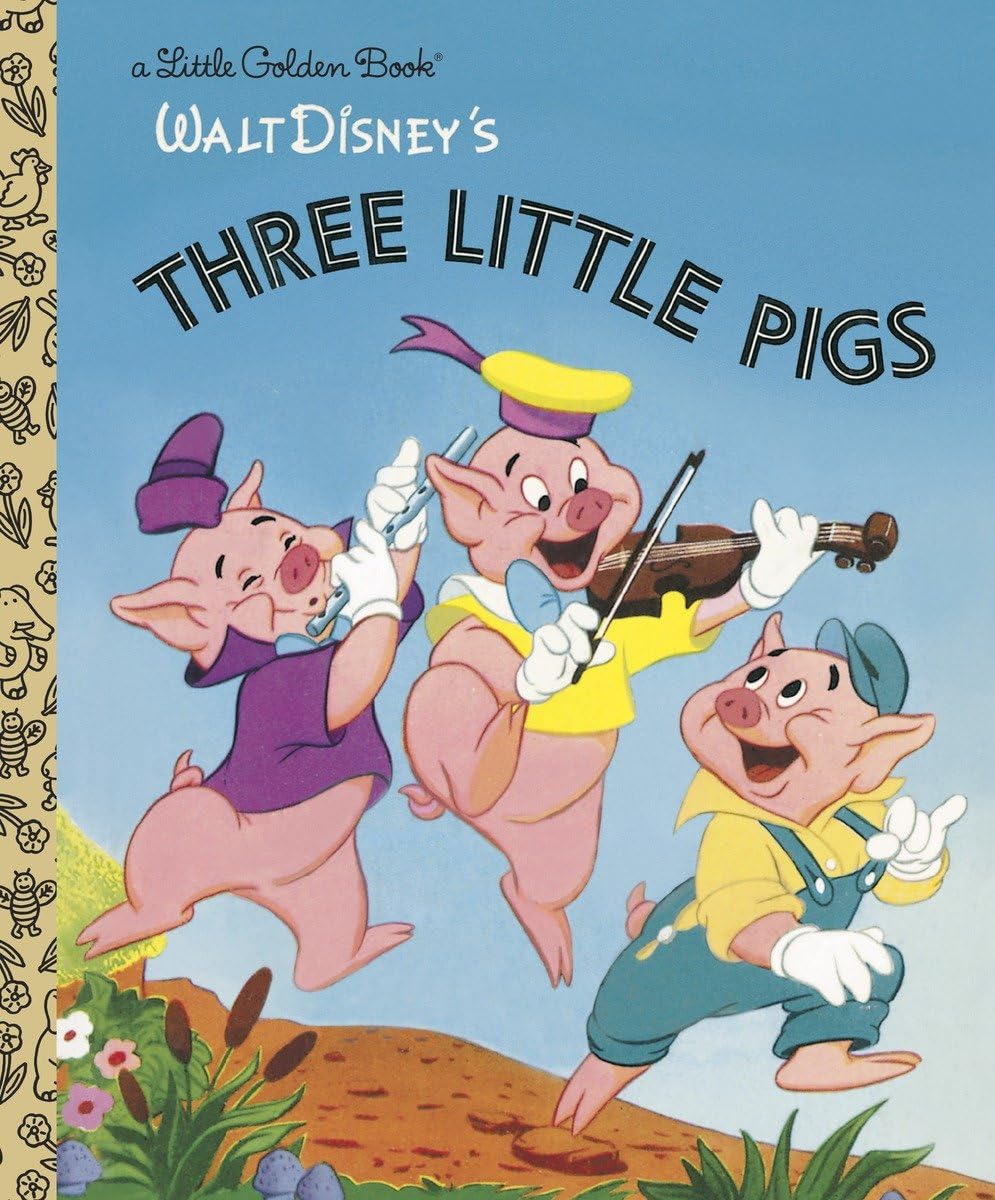This month's Book Nook topic is...
Understanding Story Structure with The Three Little Pigs

The first step in understanding a story is getting a sense of its structure. Most stories are made up of basic elements like Character, Setting, Problem, Action and Resolution. Being aware of these elements helps us grasp the whole story more easily and predict what might happen next.
In this Book Nook post, we’ll share some tips for what you can do during book reading to build your child’s understanding of story structure and make it easier for her to understand the stories she hears or reads on her own when she starts school.
The Book:
The Three Little Pigs by Rh Disney
Why we chose it
Fairy tales like this one are a particularly good choice for helping children understand story structure. They usually have a clear problem, actions and resolution, making it easy to explain and show examples of what these elements are.
Story Structure: CSPAR
Most stories have similar structural elements. At Hanen, we remember these elements with the acronym CSPAR, which stands for:
Characters– Who the story is about.
Setting– Where the story takes place.
Problem– There is usually a problem that the characters need to solve.
Actions – The things the characters do as they attempt to solve the problem.
Resolution– How the problem gets solved and what happens in the end.
One way to help your child understand story structure is to highlight these elements while sharing the story and talk about them.
The first time you read the book
The first time you read The Three Little Pigs, the goal is to help your child understand what’s happening in the words and the pictures of the story. As you read, you can pause to point out different elements of CSPAR. For example:
- For Character, when looking at the cover, you could say: “Those are the pigs and the wolf – that’s who this story is about.”
- For Setting, again looking at the cover, you could say: “This story takes place at the houses of the three little pigs.”
- For Problem, when looking at the first page, you could say: “Uh-oh, the pigs have a problem – the wolf wants to blow their houses down and eat them.”
- For Actions, you can talk about what’s happening in the pictures of the book. For example, you could say, “Now the two brothers are running to the third pig’s house for safety.”
- For Resolution, you can wait until the book is finished and then talk about how the problem was solved. You could say, “So, the pigs solved their problem by building a very strong house out of bricks.”
The second time you read the book
A key part of highlighting CSPAR is to actually use the CSPAR terms, even if these are new to your child. So, now that you’ve helped your child understand what’s happening in the story, be sure to use the CSPAR names during your second reading. Remember that you’ll need to explain each term when you use it.
The best times to use CSPAR terms are when your child shows an interest in something happening in the book. Use your child’s interest as an opportunity to highlight a CSPAR element. Here are some examples:
- If your child points to or mentions the wolf, you could say: “That’s the wolf – he’s one of the characters in the story – he is the one who the story is about.”
- If your child shows interest in the cover, you could say: “The setting of the story is where the story takes place. Look, the Three Little Pigs are dancing in the countryside on the cover. It looks like the countryside will be the setting of the story.
- When looking at the pigs, your child might notice that the pigs look worried. You could say: “Uh-oh, there’s a big problem here – the wolf wants to eat the pig, and is going to break his house down!”
- On the page where the pigs are building their houses, you could say “The Pigs are taking action to solve their problem by building new houses.”
- After the reading, or on the last page, you could say: “So, the pigs came to a resolution at the end of their story – in the strong house made out of bricks they were safe from the wolf. They solved their problem!”
The third time you read the book:
Now that your child has heard the story a couple of times, you can try asking one or two questions to get him thinking and talking about the story structure elements. For example, when looking at the cover of the book, you could ask a couple of these questions:
- Who are the other characters in this story?
- What is the setting in this story?
- What is the problem in this story?
- What action are the pigs going to take next?
- Do you remember what the resolution was at the end of the story?
Remember, we don’t want to ask too many of these questions at once, since they can make your child feel like he’s being tested. But asking a few at the beginning of your third reading will help solidify your child’s understanding of story structure and will help her bring this understanding to other stories that she hears later on.
Happy reading!
More Resources
The strategies in this Book Nook post are drawn from Hanen’s practical, research-based guidebooks for building emergent literacy. Explore the links below to learn more about how these guidebooks can support you.
For Parents I'm Ready! guidebook
I'm Ready! guidebook
For Educators ABC and Beyond guidebook
ABC and Beyond guidebook
